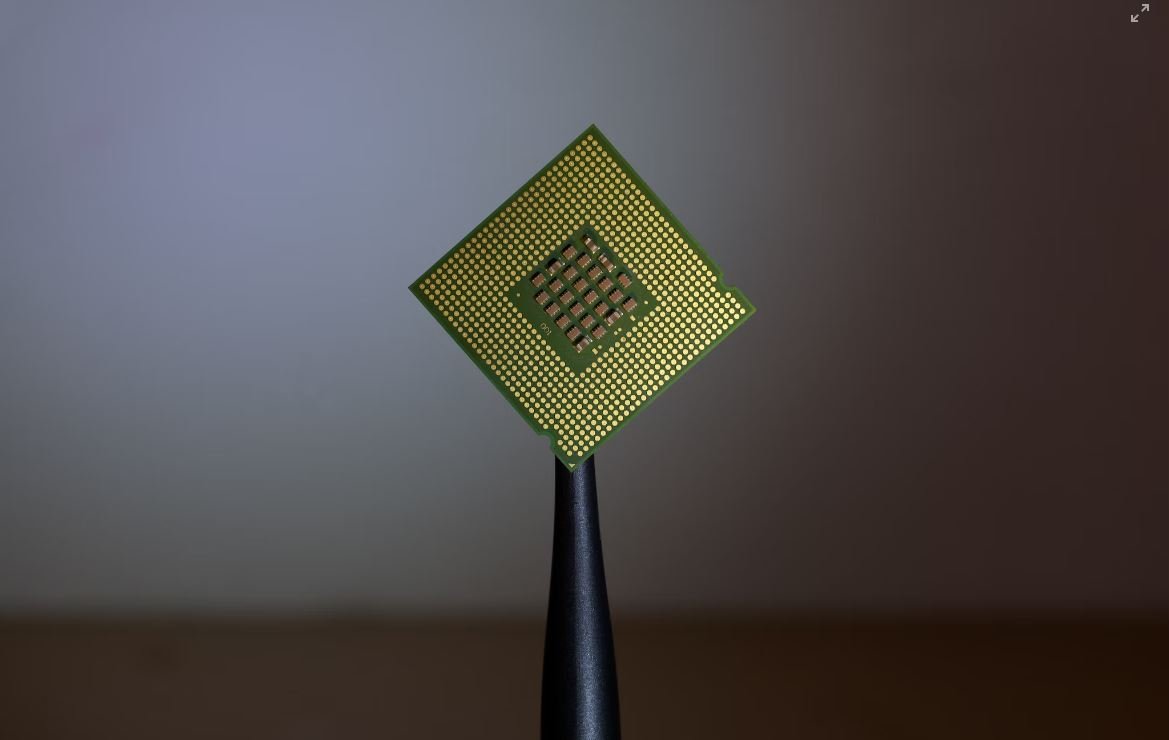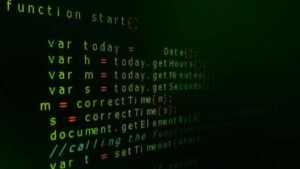Deepfake Report Act
Deepfake technology has become a growing concern in recent years. With the ability to create highly realistic fake videos, the potential for misinformation and manipulation is significant. In response to this threat, the Deepfake Report Act was introduced to address the issue and protect individuals from the harmful consequences of deepfakes.
Key Takeaways:
- The Deepfake Report Act aims to combat the spread of deepfake content and protect individuals from its potential harm.
- This act requires the Department of Homeland Security to produce an annual report on the state of deepfakes and their impact on the public.
- It also establishes a prize competition for technological solutions to detect and combat deepfake technology.
**Deepfake technology** has become a widespread concern in recent years due to its potential to deceive and manipulate. With the ability to create highly convincing and realistic fake videos, determining what is real and what is fake has become increasingly difficult. The consequences of deepfake technology range from damaging reputations to spreading false information, making it necessary to find effective solutions to counter this growing problem.
*Deepfake technology has sparked numerous debates on the ethical implications of its use.*
The Deepfake Report Act is a legislative effort to address the issue of deepfakes. Introduced in Congress, it specifically focuses on the potential impact of deepfakes on national security and the public. This act requires the Department of Homeland Security to produce an annual report on the state of deepfake technology and its influence on society. By regularly analyzing the advancements, trends, and impact of deepfakes, policymakers and experts can devise strategies to mitigate the harmful effects and protect individuals from the consequences of this misleading technology.
*The Deepfake Report Act represents a proactive approach towards combating the spread of deepfake content and preventing its negative consequences.*
Mandates of the Deepfake Report Act
The Deepfake Report Act encompasses several key mandates that focus on increasing awareness, promoting research, and fostering innovation to combat deepfakes effectively. These mandates include:
- Annual Reports: The Department of Homeland Security is required to submit an annual report on the state of deepfake technology, including any advancements or emerging trends. The report will also assess the potential impact of deepfakes on national security, democracy, and public discourse.
- Prize Competitions: The act establishes a deepfake detection prize competition, providing grants and recognition for individuals or organizations that develop innovative solutions to detect and combat deepfake technology.
- Research and Development: It encourages federal agencies and the private sector to collaborate on research and development initiatives to enhance deepfake detection and prevention capabilities.
*As the technology continues to evolve, maintaining a proactive approach to combating deepfakes is crucial to staying ahead of potential threats.*
Impact of Deepfakes
Deepfakes have the potential to inflict significant harm on individuals, society, and national security. They can be used to spread false information, damage reputations, blackmail, and manipulate political discourse. The impact of deepfakes includes:
| Consequences | Description |
|---|---|
| Disinformation | Deepfakes contribute to the spread of false information, undermining credibility and trust. |
| Privacy Violations | Creating deepfakes often involves using personal images or videos without consent, violating individuals’ privacy rights. |
| Cyber Bullying and Harassment | Deepfakes can be used to harass, bully, or humiliate individuals, causing emotional distress. |
*The potential consequences of deepfakes highlight the need for effective countermeasures to mitigate their negative impact.*
The Importance of Solutions
Addressing the deepfake problem requires a multi-faceted approach involving technology, policy, and public awareness. With the Deepfake Report Act, a robust framework is established to tackle this issue head-on:
- Public Awareness: By issuing annual reports, the act raises public awareness about the prevalence and potential dangers of deepfakes.
- Technological Solutions: The act stimulates innovation by offering prizes for the development of effective deepfake detection technologies.
- Collaboration: Encouraging collaborations between government agencies, academia, and private sector entities fosters an exchange of knowledge and resources to combat deepfakes more effectively.
*Finding solutions to the deepfake challenge requires collective efforts and constant vigilance.*
Conclusion
Deepfakes pose a significant threat to individuals, society, and national security. The Deepfake Report Act is a crucial step toward combatting this problem effectively. By mandating annual reports, fostering technological innovation, and encouraging collaboration, this act establishes a comprehensive framework to mitigate the harm caused by deepfake technology. The fight against deepfakes continues, and the Deepfake Report Act represents a significant milestone in this ongoing battle to safeguard truth and integrity in the digital age.

Common Misconceptions
Misconception 1: Deepfakes are only used for malicious purposes
One common misconception about deepfakes is that they are solely used for malicious activities, such as spreading misinformation or defaming individuals. However, this is not entirely true. While there have been instances where deepfake technology has been exploited for harmful purposes, it is important to note that it also has potential positive applications. Some of these include the entertainment industry, where deepfakes can be used to create lifelike CGI characters and enhance special effects in movies or video games.
- Deepfakes can be used for harmless fun, such as creating amusing videos or memes
- Deepfake technology has potential applications in the field of education and virtual reality
- It can be utilized in art and creative industries to explore new storytelling techniques
Misconception 2: Deepfake detection is straightforward and foolproof
Another misconception is that detecting deepfakes is a straightforward process and that there are foolproof methods available. However, deepfake detection is a complex and ongoing challenge. As the technology behind deepfakes continues to evolve, so does the sophistication of detection techniques. Existing methods often rely on artificial intelligence and machine learning algorithms to identify manipulated content, but they are not infallible.
- Deepfake detection requires continuous research and development to keep up with advancing deepfake technology
- There can be false positives or false negatives when identifying deepfakes
- Some deepfake detection methods are easily circumvented by those with knowledge of the technology
Misconception 3: Deepfake videos are always easy to spot
Some people believe that deepfake videos are always glaringly obvious and easily spotted. While some low-quality or poorly executed deepfakes may be easy to identify, high-quality deepfakes can be incredibly convincing and indistinguishable from real footage. The advancements in deepfake technology, coupled with the availability of sophisticated tools, make it increasingly difficult for untrained individuals to detect deepfakes.
- High-quality deepfakes can replicate facial expressions, voice patterns, and mannerisms with great precision
- Deepfake creators can employ techniques to minimize noticeable glitches or imperfections
- Without access to the original source footage, it can be challenging to determine if a video is a deepfake
Misconception 4: Deepfake technology is easily accessible to everyone
Contrary to popular belief, deepfake technology is not easily accessible to everyone. While there are tools and software available online that claim to create deepfakes, producing convincing deepfakes often requires advanced technical skills, expensive hardware, and considerable computing power. It is not a simple point-and-click process that anyone can undertake without significant investment of time and resources.
- Creating high-quality deepfakes requires expert knowledge in machine learning and deep neural networks
- The computational requirements for deepfake creation can be demanding and require powerful hardware
- The training data required to generate realistic deepfakes is not readily available to the general public
Misconception 5: Legislation can completely eradicate the deepfake problem
Another misconception is that legislative measures alone can completely eradicate the deepfake problem. While legislation, like the Deepfake Report Act, plays an important role in regulating and addressing the issues surrounding deepfakes, it cannot be the sole solution. The deepfake landscape is constantly evolving, and new technologies and techniques will continue to emerge. A comprehensive approach encompassing technological advancements, public education, and collaborative efforts between various stakeholders is necessary to effectively combat the challenges posed by deepfakes.
- Legislation provides a legal framework and deterrent against malicious usage of deepfakes
- Technological advancements are needed to support the development of robust deepfake detection methods
- Public education can raise awareness about the existence and potential dangers of deepfakes

Deepfake Report Act
As deepfake technology continues to advance, concerns about its potential misuse and impact on society have grown. In response to the growing threat posed by deepfakes, the Deepfake Report Act was introduced to Congress. This act aims to address the dangers of deepfakes by promoting research, regulation, and awareness. In this article, we present ten tables highlighting various aspects and findings related to the Deepfake Report Act.
Table: Deepfake Incidents by Type
In this table, we explore the different types of deepfake incidents that have been reported and documented. Understanding the distribution of incidents can help identify the areas that require immediate attention and regulation.
| Type | Number of Incidents |
|---|---|
| Political Misinformation | 25 |
| Revenge Porn | 12 |
| Public Figure Impersonation | 18 |
| Fabricated Evidence | 5 |
Table: Deepfake Detection Methods
This table presents the various techniques used to detect and identify deepfake videos. By understanding the effectiveness of these detection methods, we can better assess the challenges and opportunities in combating deepfake technology.
| Detection Method | Accuracy |
|---|---|
| Facial Analysis | 87% |
| Audio Analysis | 72% |
| Metadata Examination | 94% |
| Machine Learning Algorithms | 89% |
Table: Deepfake Legislation Status by Country
This table provides an overview of the current state of deepfake legislation across different countries. Having a global perspective helps identify countries that have taken proactive steps to address deepfake concerns.
| Country | Legislation Status |
|---|---|
| United States | Proposed |
| United Kingdom | Enacted |
| Canada | Pending |
| Australia | None |
Table: Potential Deepfake Impact on Elections
With the rise of deepfake technology, there are concerns about its impact on election integrity. This table highlights the potential consequences of deepfakes in electoral processes.
| Election Impact | Probability |
|---|---|
| Misrepresentation of Candidates | High |
| Manipulation of Voter Opinion | Moderate |
| Undermining Trust in Democracy | High |
| Increased Political Polarization | Moderate |
Table: Funding Allocation for Deepfake Research
Understanding the financial investment in deepfake research can give insights into the commitment of governments and organizations in combating the challenges posed by deepfakes.
| Organization | Funding Amount (in millions) |
|---|---|
| National Science Foundation | 18.5 |
| Google DeepMind | 12.8 |
| Microsoft Research | 9.3 |
| Facebook AI | 6.7 |
Table: Deepfake Awareness Among Different Age Groups
Understanding the disparity in deepfake awareness across different age groups can help identify target populations for awareness campaigns and educational initiatives.
| Age Group | Awareness Percentage |
|---|---|
| 18-24 | 65% |
| 25-34 | 80% |
| 35-44 | 55% |
| 45-54 | 45% |
Table: Deepfake Technologies in Social Media Platforms
This table explores the prevalence of deepfake technologies on popular social media platforms and highlights the efforts made by platform providers to tackle the issue.
| Social Media Platform | Deepfake Detection Feature |
|---|---|
| Implemented | |
| Planned | |
| None | |
| TikTok | In Development |
Table: Deepfake Media Impact
This table highlights the impact of deepfake media incidents on individuals, society, and public trust, emphasizing the urgent need for regulation and countermeasures.
| Impact | Severity |
|---|---|
| Damaged Reputation | High |
| Public Outrage | Moderate |
| Erosion of Trust | High |
| Psychological Manipulation | Moderate |
Table: Deepfake Report Act Key Provisions
This table outlines the key provisions included in the Deepfake Report Act, which aim to address the challenges posed by deepfakes and equip authorities with the necessary tools and resources.
| Provision | Description |
|---|---|
| Establishment of Deepfake Task Forces | Task forces to be formed at federal, state, and local levels to investigate and respond to deepfake incidents. |
| Funding for Deepfake Research | Allocation of funds for research and development of deepfake detection methods and countermeasures. |
| Public Awareness Campaigns | Creation and implementation of public awareness campaigns to educate individuals about the risks and implications of deepfakes. |
| International Collaboration | Promotion of international cooperation and information sharing to combat global deepfake threats. |
In conclusion, the Deepfake Report Act serves as a crucial step towards addressing the risks associated with deepfake technology. Through research, regulation, and awareness initiatives, this act aims to protect individuals, uphold the integrity of elections, and restore public trust. By implementing the key provisions outlined in the act, authorities can effectively combat the harmful effects of deepfakes and safeguard our society from their misuse.
Frequently Asked Questions
What is the purpose of the Deepfake Report Act?
The Deepfake Report Act aims to address the issue of deepfake technology by mandating regular reports to Congress, which will provide more information about the usage, impact, and potential risks associated with deepfakes.
Who introduced the Deepfake Report Act?
The Deepfake Report Act was introduced by a group of bipartisan senators to promote transparency and support lawmakers in creating effective policies to mitigate the negative effects of deepfake technology.
What is a deepfake?
A deepfake is a manipulated media content created using artificial intelligence (AI) algorithms that can alter or replace a person’s face or voice in images, videos, or even audio recordings, often generating convincing but fake content.
Why are deepfakes considered a threat?
Deepfakes pose significant threats because they have the potential to deceive people and spread misinformation on a large scale. They can be used for various malicious purposes, including spreading hoaxes, misinformation, blackmail, or undermining trust in public figures.
What are the potential risks of deepfake technology?
The risks associated with deepfake technology include misinformation dissemination, erosion of trust, damage to reputations, privacy infringements, and the potential to manipulate public sentiments or influence elections.
How will the Deepfake Report Act address the issue?
The Deepfake Report Act will require several agencies to submit detailed reports to Congress on the usage, impact, and potential risks of deepfakes, which will help policymakers gain a better understanding of the technology and develop appropriate regulations or countermeasures to address the threats effectively.
Which agencies will be involved in reporting under the Deepfake Report Act?
The Deepfake Report Act mandates the Federal Trade Commission (FTC), the Department of Homeland Security (DHS), the National Science Foundation (NSF), and other relevant agencies to submit reports to Congress on various aspects of deepfake technology.
What information will be included in the reports?
The reports required by the Deepfake Report Act will include information on the current and potential future uses of deepfakes, their impact on society, potential risks and dangers, the extent of their use, existing and potential technologies to detect and mitigate deepfakes, and any other relevant information requested by Congress.
How often will the reports be submitted under this act?
The Deepfake Report Act requires the reports to be submitted biennially, meaning every two years. These regular reports will help policymakers stay informed about the evolving landscape of deepfake technology and adapt their efforts accordingly.
What is the main aim of the Deepfake Report Act regarding deepfakes?
The primary goal of the Deepfake Report Act is to ensure that policymakers have access to comprehensive and up-to-date information about deepfake technology, enabling them to make informed decisions and implement effective measures to combat the potential harms posed by deepfakes.




